Past and present
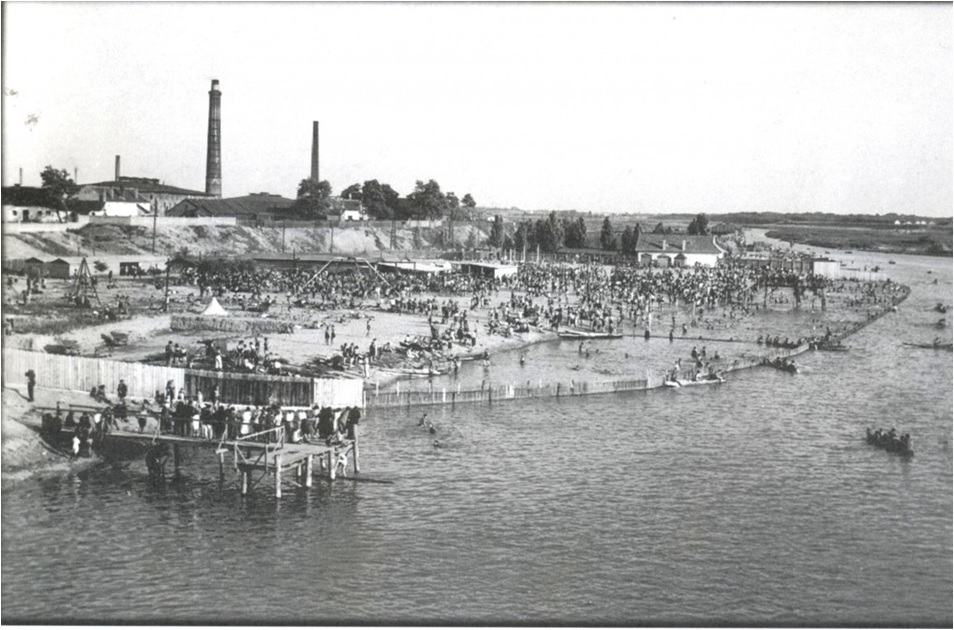
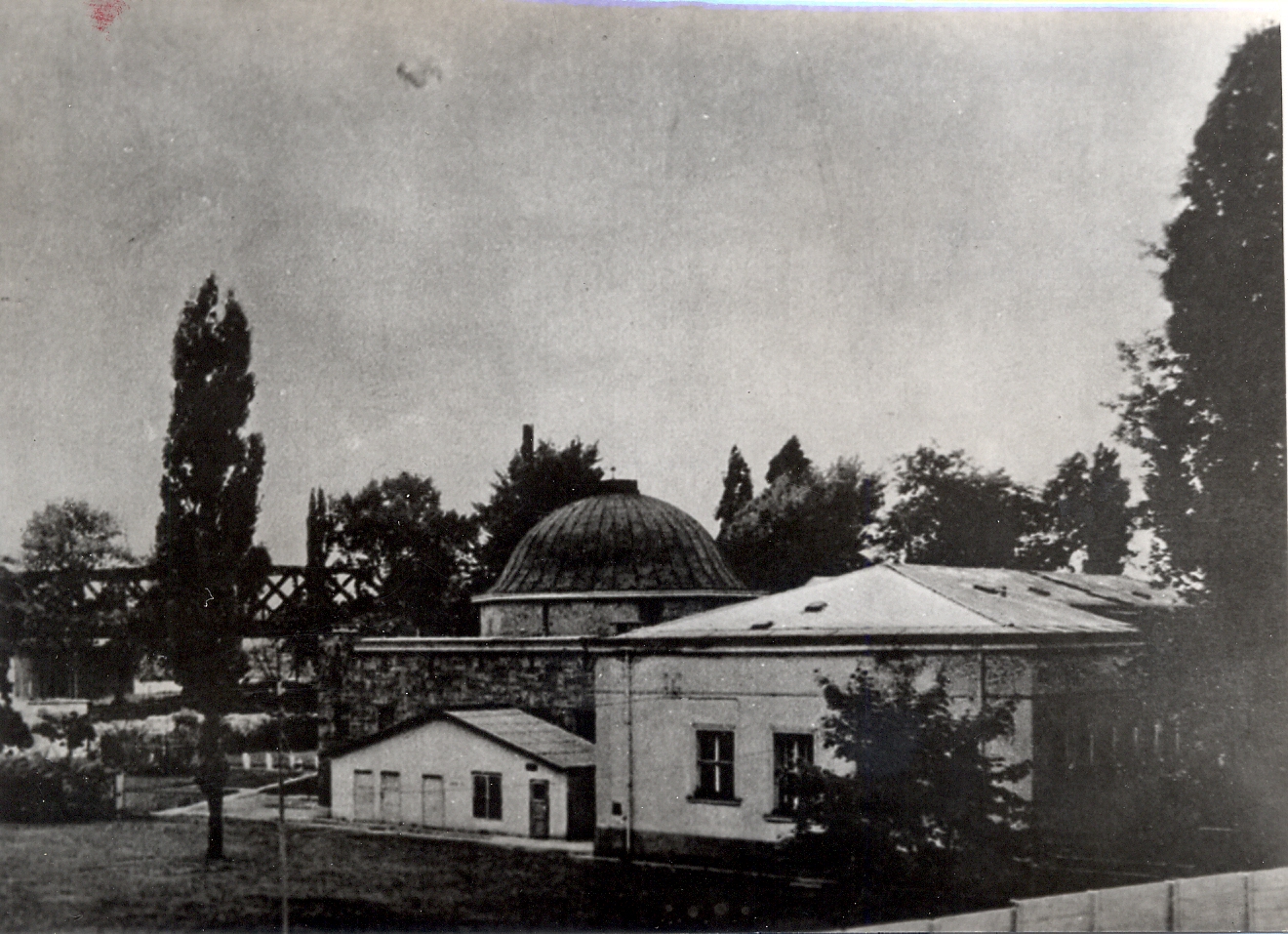 | the beginnings
In the area of the Pesterzsébet Baths near the Danube, there was already an open air bath established at the beginning of the 20th century. At that time, wooden buildings and a pier stretching into the Danube welcomed the visitors. The Danube was used for swimming and sunbathing on the sandy shore. The first pools were built in the 1930s and filled with water from the Danube. It was then that iodine-saline medicinal water was found in the area. In the 1950s and 1960s, the water of the Danube became unsuitable for bathing. At the same time, the classic "Turkish bath-like" stone spa was built, with an octagon pool in the central dome area, surrounded by other purpose and service areas. By the end of the 1970s, a spa and open air bath complex with a wave pool and kids' pool, mud treatment and massage services had been established, which operated until the early 2000s. Due to financing problems of the health section (the iodine-salty water had to be heated), the open air bath was closed in 2001 and the spa was also closed down in 2005. |
the present
During the current renovation, the building of the existing bath and the "Turkish bath-like building" will be extended with new functions, for example sauna world, swimming pool, fun pool, kids' pool, plunge and outdoor pools. The new building complex provides new context for the existing values, establishes active connection with the natural environment and welcomes visitors all year round. The central area of the existing and renovated building is the domed spa with the octagon pool. This central location was built into the complex as an existing center, which was extended by a similar but new center, which is the central fun pool. Around them were organized - somewhat concentrically - the other functions. This old and new center has a special significance, which is also reflected in the spatial formation and spatial experience. Prestigious places that have extra meaning and have the potential to create an advanced aesthetic experience. | 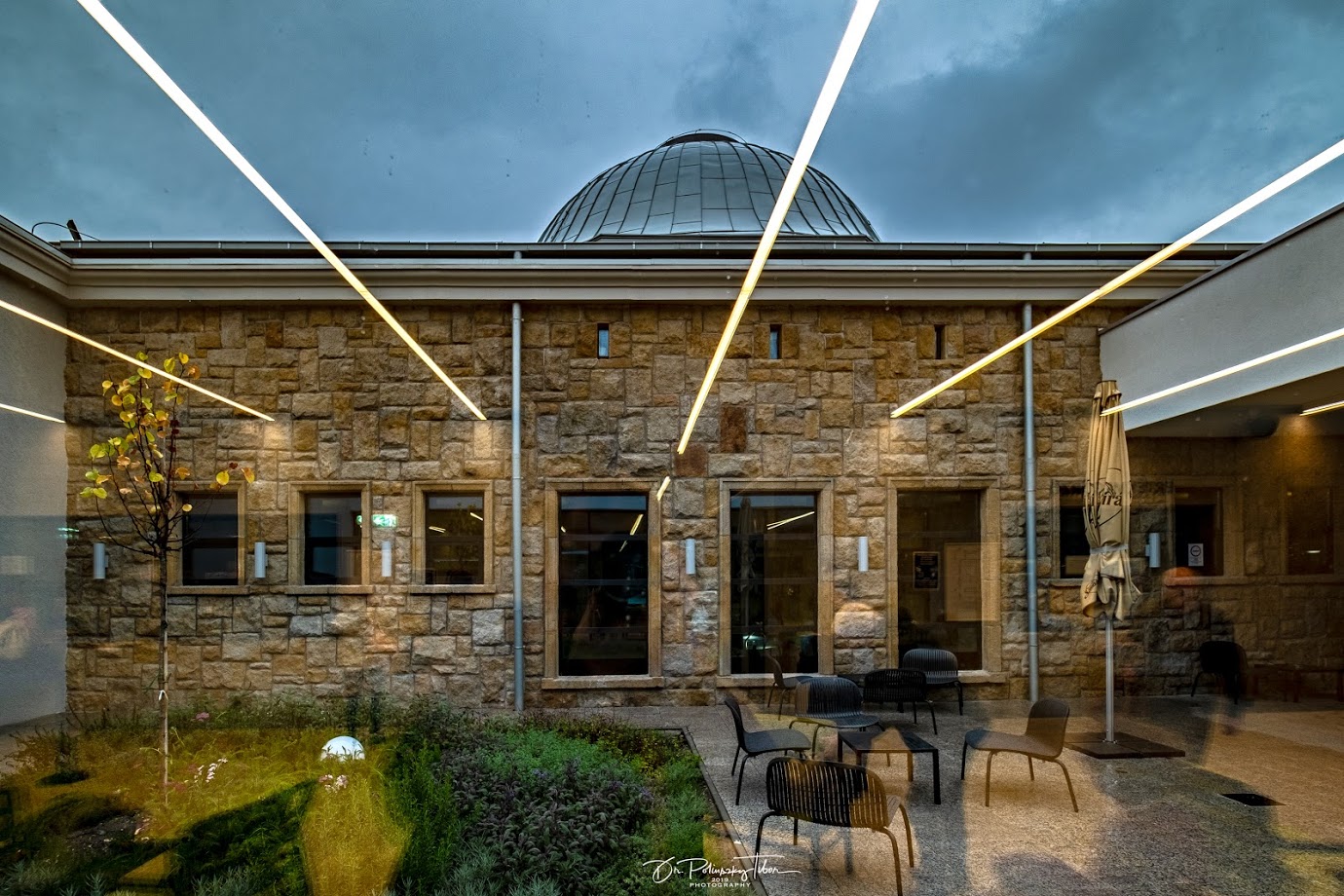 |
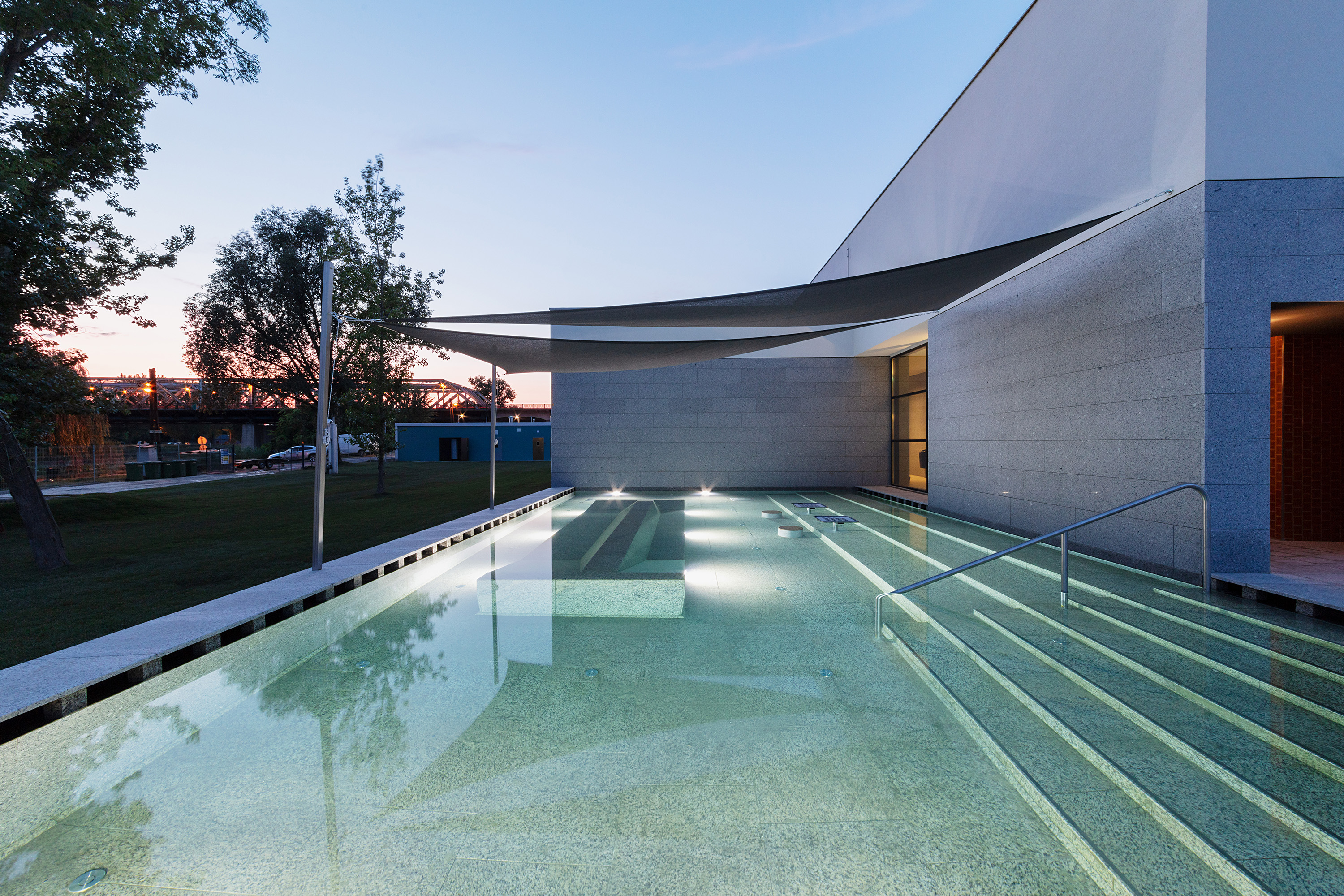 | inside and outside
The open air bath is an organic part of nature, nature almost flows into the main building. The open air bath pools are located on a continuous, minimally covered surface. This elevated part supports an even better overview of the Danube, and that the rest of the open air bath area can remain fully green. There is a smooth transition between the indoors and outdoors, so bathing becomes a nature-like event. Also, natural light enters the indoors. Via large openings on the facade, or smaller slots, or ceiling windows. The water surfaces are designed to reflect sunlight on them at most times of the day, creating a constantly vibrating effect, either on the ceiling or on the side wall. At night, it all reverses and the enclosed parts flood with light, changing the character of the interior into an introvert, intimate atmosphere. |
timeless material
Granite is the typical material used across the baths. It is tough and timeless, a counterpoint to the soft and liquid water, at the same time referring to historical spas. This hardness is dampened by the colorful, glazed ceramic covers in the inside of the masses, also indicating resting zones. Their surface repeats the reflection of water, thereby multiplying the sense of water on the walls. Surrounded by copoly glass and floodlit, the changing room provides guests with a semi-transparent intimacy, evoking the water surface in the spa. | 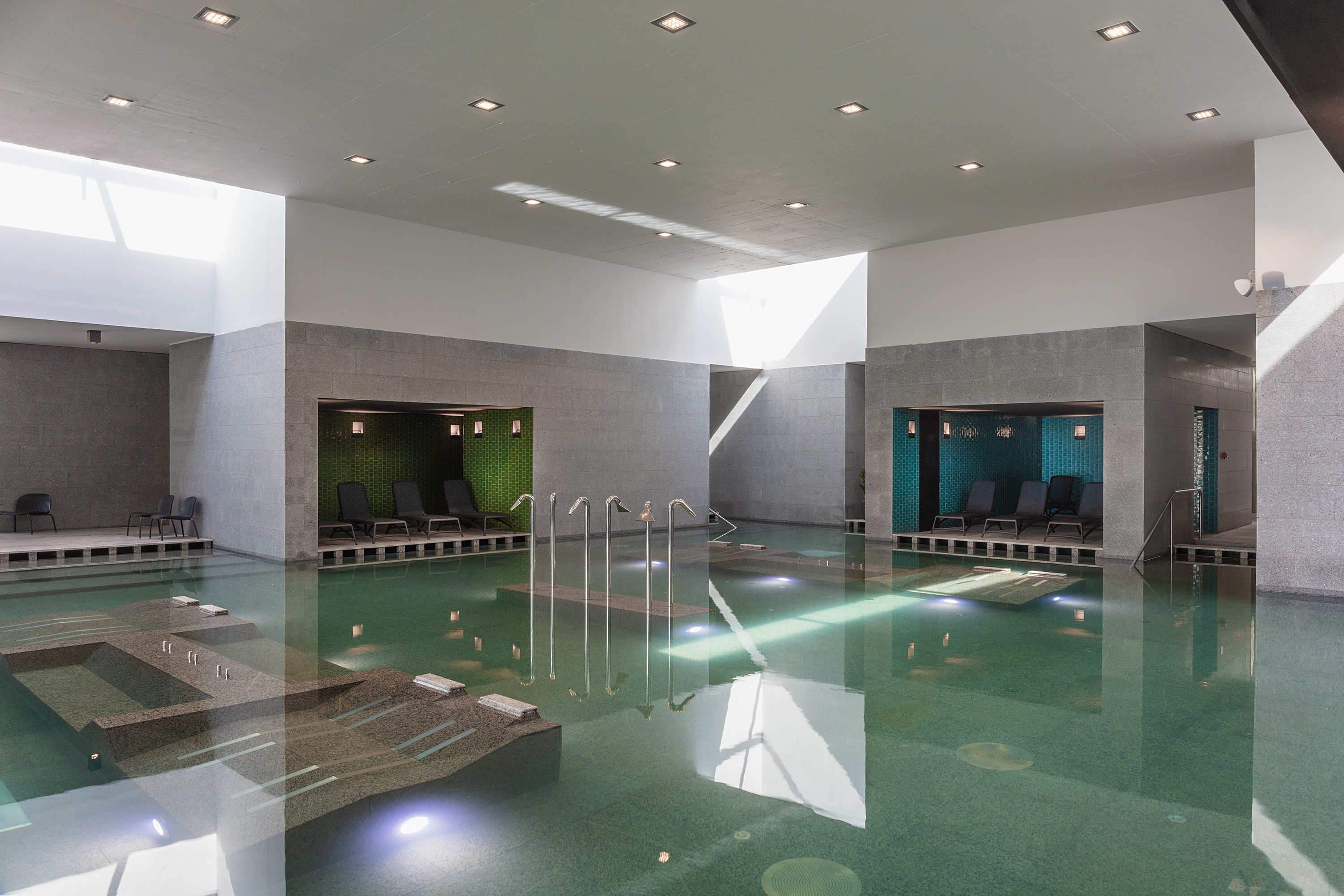 |

